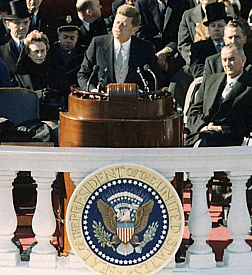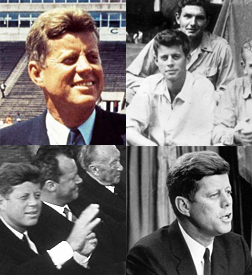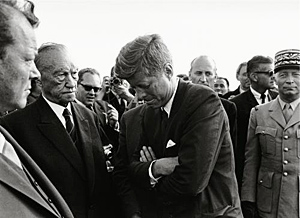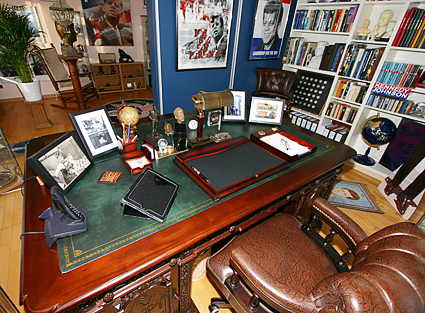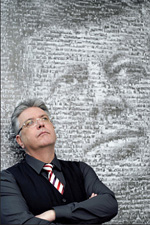
JFK life

1942 in Uniform

Skipper aboard the PT-109
|
Military service
On September 1941, after medical disqualification by the Army for his chronic lower back problems, Kennedy joined the U.S. Navy, with the influence of the director of the Office of Naval Intelligence, former
naval attaché to Joseph Kennedy.
Kennedy was an ensign serving in the office of the Secretary of the Navy when the attack on Pearl Harbor occurred. He attended the Naval Reserve Officer Training Corps and then voluntarily entered the Motor Torpedo Boat Squadron Training Center in Melville, Rhode Island. Thereafter, he was assigned duty in Panama and later in the Pacific theater, where Kennedy earned the rank of lieutenant, commanding a patrol torpedo (PT) boat. On August 2, 1943, Kennedy's boat, PT-109, along with PT-162 and PT-169, were performing nighttime patrols near New Georgia in the Solomon Islands, when PT-109 was rammed by the Japanese destroyer Amagiri. Kennedy gathered his surviving crew members together in the water around the wreckage, to vote on whether to "fight or surrender". Kennedy stated, "There's nothing in the book about a situation like this. A lot of you men have families and some of you have children. What do you want to do? I have nothing to lose." Shunning surrender, the men swam towards a small island. Kennedy, despite re-injury to his back in the collision, towed a badly burned crewman through the water with a life jacket strap clenched between his teeth. He towed the wounded man to the island, and later to a second island, from where his crew was subsequently rescued. For these actions, Kennedy received the Navy and Marine Corps Medal with the following citation: For extremely heroic conduct as Commanding Officer of Motor Torpedo Boat 109 following the collision and sinking of that vessel in the Pacific War Theater on August 1–2, 1943. Unmindful of personal danger, Lieutenant (then Lieutenant, Junior Grade) Kennedy unhesitatingly braved the difficulties and hazards of darkness to direct rescue operations, swimming many hours to secure aid and food after he had succeeded in getting his crew ashore. His outstanding courage, endurance and leadership contributed to the saving of several lives and were in keeping with the highest traditions of the United States Naval Service. In October 1943, Kennedy took command of a PT boat converted into a gunboat, PT-59, which took part in a Marine rescue on Choiseul Island that November. Kennedy then left PT-59, and returned to the United States in early January 1944. After receiving treatment for his back injury, he was released from active duty in late 1944. Kennedy was honorably discharged in early 1945, just prior to Japan's surrender. Kennedy's other decorations in World War II included the Purple Heart, American Defense Service Medal, American Campaign Medal, Asiatic-Pacific Campaign Medal with three bronze service stars, and the World War II Victory Medal. When later asked how he became a war hero, Kennedy joked: "It was easy. They cut my PT boat in half." In April 1945, Kennedy's father, a friend of William Randolph Hearst, arranged a position for his son as a special correspondent for Hearst Newspapers; the assignment kept Kennedy's name in the public eye and "exposed him to journalism as a possible career." He worked as a correspondent that May, covering the Potsdam Conference and other events. next: Representatives career |
|
Article based on John F. Kennedy from Wikipedia, the free Encyclopedia.
Text available under the Creative Commons Attribution-ShareAlike License Wikipedia® is a registered trademark of the Wikimedia Foundation, Inc., a non-profit organization. |

